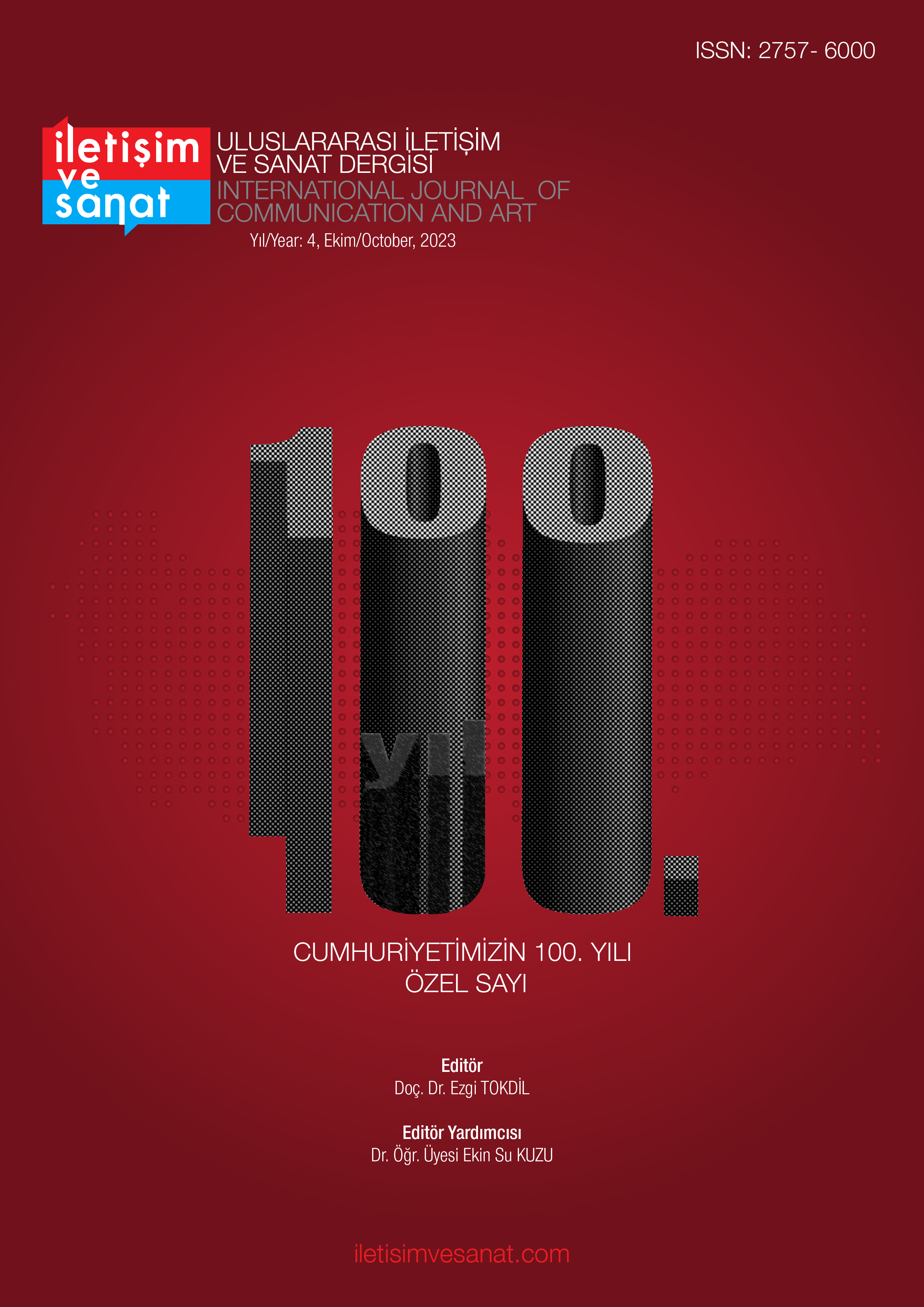Author :
Abstract
ÖZ: İşbu makale, dokuyu karmaşık bir olgu ve önemi bakımından biçim-yapıya karşılık gelen temel bir ifade aracı olarak ele almaya adanmıştır. Araştırma sürecinde tespit edildiğine göre bu iki bileşen herhangi bir müzik malzemesinin oluşumunun "inşa" sürecinin ayrılmaz bir parçası olup, form eserin bu malzemesinin gelişim yolu ve doku bu malzemenin sunumunun yoludur. Bu bileşenlerin bir arada varlığını dikkate almanın metodolojik temeli, bir müzik eserinin (piyano parçası) dokulu alanının üç boyutluluğuna ve onun konfigürasyonel doğasına dayanmaktadır. Doku parametreleri − dikey, yatay, derinlik - birlik içinde – müzik eserinin ses üretiminin genel alanının besteci tarafından yaratılmasının ve piyanist tarafından uygulanmasının anahtarıdır. Bu, yalnızca eserin dokusunu "çözmek"le kalmayıp, aynı zamanda onda müzik eserinin sanatsal-yapıcı bir fenomen olarak düşünülmesi mümkün olmayan ek ifade olanaklarını bulması gereken icracılara ek görevler yüklemektedir.
İki seçkin besteci-piyanist F. Chopin ve F. Liszt'in eserleri, form ve dokunun bir arada varlığının eşitliğinin dikkate alınmasına ilişkin belirtilen ilkelerin uygulanmasına örnek olarak verilmiştir. F. Chopin'in dokuda çoklu tür ilkesine bağlı kaldığı, onu anlamsal ve ses düzeylerinde yeniden ürettiği belirtilmektedir. Bununla birlikte F. Liszt'in piyano minyatürlerindeki dokuyu oluşturma yöntemi, figürasyon ve süsleme sayesinde zıt figüratif özellikler kazanan konu-melodinin "renksel zenginleştirilmesine" dayanmaktadır. Bu tür dokusal dolgular, "piyano" enstrümanının metnin grafik formüllerinin yeniden üretilmesinin, belirli tını akustiğinin ve eserin genel sanatsal fikrinin somutlaştırılmasının ana aracı olduğu herhangi bir müzik materyalinin (piyano eseri) mekansal varlığının etkili ve üretken bir süreci olan formun uçtan uca geliştirilmesinde gerçekleştirilir.
Keywords
Abstract
ABSTRACT. This paper considers texture as a complex phenomenon and a key expressive tool that correlates its importance with form and structure. The study shows that these two components are essential for the "construction" process of creating any musical content and determines that form is a way of developing this content, while texture is a way of presenting it. The methodological basis for considering the coexistence of these components rests on the three-dimensional textural space of a musical composition (piano composition) and its configurative nature. In their unity, such texture parameters as vertical, horizontal, and depth are the key to the composer's creation and the pianist's embodiment of the overall space of a musical composition's sound reproduction. This implies additional responsibilities for artists. Thus, they must not only "decode" the texture of the composition, but also find opportunities for additional expression, which is essential for a musical composition as an artistic and constructive phenomenon.
The works of F. Chopin and F. Liszt, two prominent composers and pianists, are given to illustrate the stated principles of considering the equal coexistence of form and texture. This article notes that F. Chopin adheres to the polygenre principle in his texture, reproducing it at the semantic and phonic levels. Meanwhile, the method of constructing texture in Liszt's piano miniatures focuses on the "coloristic enrichment" of the theme-melody, which acquires contrasting figurative traits through figurations and ornamentation. These types of textural content are implemented through the cross-cutting form evolution, being an effective and generative process of the spatial existence of any musical composition (piano composition), with the piano being the main instrument for reproducing graphic formulas of the text, embodying certain timbral acoustics and the overall artistic intent of the composition.
